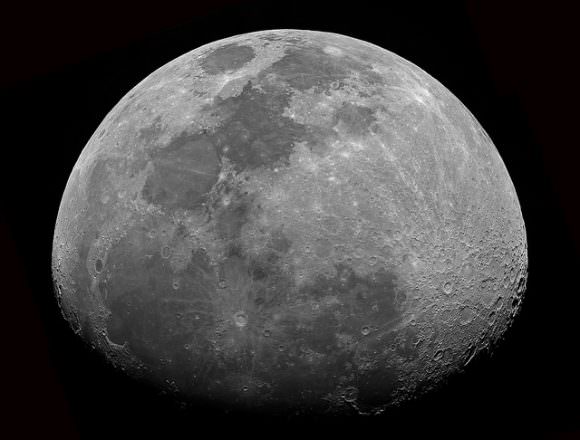As you’ve probably noticed, the Moon looks different from one evening to the next. Sometimes we see a New Moon, when the Moon is enshrouded in shadow. At other times, we see a Full Moon, when the entire face of the Moon is illuminated. And of course, there are the many phases in between, where portions of the Moon are illuminated.
This is what is called a Lunar Cycle, a 29 ½-day period (aka. lunar month) where the Moon becomes brighter and dimmer, depending on its orientation with the Earth and the Sun. During the first half of a lunar month, when the amount of illumination on the Moon is increasing, astronomers call this a “waxing moon”.
Lunar Cycle:
To understand the Lunar Cycle, we first must consider the Moon’s orbit in relation to Earth. Basically, the Moon orbits Earth, and Earth orbits the Sun, which means the Moon is always half illuminated by the latter. But from our perspective here on Earth, which part of the Moon is illuminated – and how much – changes over time.
When the Sun, the Moon and Earth are perfectly lined up, the angle between the Sun and the Moon is 0-degrees. At this point, the side of the Moon facing the Sun is fully illuminated, and the side facing the Earth is enshrouded in darkness. We call this a New Moon.
After this, the phase of the Moon changes, because the angle between the Moon and the Sun is increasing from our perspective. A week after a New Moon, and the Moon and Sun are separated by 90-degrees, which effects what we will see. And then, when the Moon and Sun are on opposite sides of the Earth, they’re at 180-degrees – which corresponds to a Full Moon.
Waxing vs. Waning:
The period in which a Moon will go from a New Moon to a Full Moon and back again is known as “Lunar Month”. One of these lasts 28 days, and encompasses what are known as “waxing” and “waning” Moons. During the former period, the Moon brightens and its angle relative to the Sun and Earth increases.

When the Moon is in between the Earth and the Sun, the side of the Moon facing away from the Earth is fully illuminated, and the side we can see is shrouded in darkness. As the Moon orbits the Earth, the angle between the Moon and the Sun increases. At this point, the angle between the Moon and Sun is 0 degrees, which gradually increases over the next two weeks. This is what astronomers call a waxing moon.
After the first week, the angle between the Moon and the Sun is 90-degrees and continues to increase to 180-degrees, when the Sun and Moon are on opposite sides of the Earth. When the Moon starts to decrease its angle again, going from 180-degrees back down to 0-degrees, astronomers say that it’s a waning moon. In other words, when the Moon is waning, it will have less and less illumination every night until it’s a New Moon.
Waxing Phases:
The period when the Moon is waxing occurs between a New Moon and a Full Moon, which is characterized by many changes in appearance. The first is known as a Waxing crescent, where 1-49% of the Moon is illuminated. Which side appears illuminated will depend on the observer’s location. For those living in the northern hemisphere, the right side will appear illuminated; whereas for those in the southern hemisphere, the reverse is the case.
Next up is the First Quarter, where 50% of the Moon’s face is illuminated – again, the right side for those in the northern hemisphere and the left for those in the south. This is followed by a Waxing Gibbous Moon, where 51 – 99% of the Moon’s surface is illuminated – right side in the northern hemisphere, left side in the southern. The waxing phase concludes with a Full Moon.
We have written many articles about the Moon here at Universe Today. Here’s What are the Phases of the Moon?, What is a Waning Moon?, What is a Hunter’s Moon?, A Red Moon – Not a Sign of the Apocalypse!, How Did the Moon Form? and What is the Distance to the Moon?
NASA has a cool list of all the Moon phases over the course of 6000 years. And here’s a calculator that shows the current phase of the Moon.
You can listen to a very interesting podcast about the formation of the Moon from Astronomy Cast, Episode 17: Where Did the Moon Come From?
Sources:


This would have been the perfect place to explain the concept of quadrature when the positions of the moon and sun define a ninety degree angle.